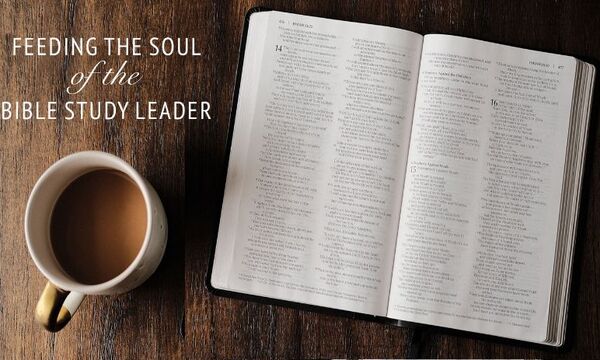Whether shock-and-awe biblical archeology, “lost” gospels found just in time for the Easter documentary season, or conclusive proof that the Nephilim of Genesis 6 were actually ancient aliens, the ol’ World Wide Web abounds with juicy rumors. While no one is talking about the big “John the Baptist Skull” story (because I just made that up 10 minutes ago), Facebook has recently been “abuzz” with an article published by the website, World News Daily Report, entitled “Newly-Found Document Holds Eyewitness Account of Jesus Performing Miracle.” This is the same website, incidentally, that broke the story, “Rancher Shoots Down UFO Near Area 51.” Despite the site’s self-identification as a “political satire web publication,” the article was posted and passed around social media hundreds of thousands of times. As a historian focused on the Roman Mediterranean, I’ll comfortably go on the record stating that this story is a pure and fantastic invention. Rather than debunking this particular Jesus rumor, however, I’d like to address a larger question facing many modern followers of Jesus: How should we respond when confronted with such “breaking news”? How might we advise those we disciple on these kinds of intriguing and quick-to-go-viral claims?
The following are just a few suggestions (and I’d love to hear a few of yours):
Breathe, think, wait.
Whether the purported discovery seems to, at first glance, bolster our faith or bring two thousand years of Christian thought to its knees, we are wise to avoid prematurely running the victory lap or over-loading our polemical pistols. Whatever the news, it is highly unlikely that a singular artifact or text will be the missing ingredient definitively transforming centuries of scholarly and popular discourse on Jesus—perhaps the most controversial figure in western history. It is often the case that a discovery makes a huge initial splash, but even after years of scrutiny the artifact’s authenticity and/or significance remains quite uncertain. The “James Ossuary” which came to light in 2002 is a great example of the latter. In short, a discovery announced on a Tuesday, probably shouldn’t anchor your sermon the following Sunday. In a culture demanding instant information and interpretation, we have an opportunity to model the virtue of patience.
Consider the source.
One of the first questions I always want to ask is, “Where is this information being reported?” If you can locate the article, documentary, or blog from which the discovery is announced, scan it for sources, institutional affiliations, even spelling. Is it being widely reported by credentialed experts in the relevant fields? Is the news breaking from a source reporting under the strictures of journalistic integrity? I’m not advocating a thoughtless ad hominem approach to debunking or verifying the info, and of course, even reliable news sources can be wrong from time to time. Nevertheless, just as the field of medicine relies on established experts and institutions to scrutinize a supposed “miracle” cure, so scholars in the fields of history, archeology, and biblical studies, to name a few, engage in open conversations (peer-reviewed publications, conference presentations, etc.) as they evaluate significant discoveries. If a discovery is truly noteworthy, it is a virtual impossibility that it will be missed by all of the thousands of accredited scholars salivating for new sources to critically evaluate. Thus, if the breaking story does not cite its sources or consult sound, institutionally-backed scholars in the relevant fields, your skubala (Phil. 3:8) detectors should be beeping.
Think through what is actually at stake with a new discovery.
Even if the source reporting a discovery is reputable and consults experts, there may exist a vast difference between the headline and the actual conclusions reached in the article. Keep in mind, every writer wants to hook his or her readers, and there’s nothing like a captivating title to accomplish just that (I got you reading this, didn’t I?). A great example is the recent publication of the so-called Gospel of Jesus’ Wife, in the Harvard Theological Review, a press not lacking in scholarly credentials.[1] The article is entitled, “Jesus said to them, ‘My wife…”, and concerns a late antique Coptic papyrus fragment (which, as it turns out, may or may not be authentic to begin with!). While the title sends the imagination (and for some, the blood pressure) soaring, within the first paragraph the author clarifies, “The fragment does not provide evidence that the historical Jesus was married but concerns an early Christian debate over whether women who are wives and mothers can be disciples of Jesus.”[2] Similarly, the way in which National Geographic marketed the “lost” Gospel of Judas in 2006 implicitly suggested that there may exist a new way to understand Jesus and Judas. Reading (or watching) a bit further quickly reveals that the “lost” text speaks more to forms of second-century Christianity than it addresses the life of the historical Jesus or Judas.
Find reliable, balanced, credentialed pundits.
No one is an expert in everything. With the increasing specialization in academics and the workplace, moreover, few are experts in more than one thing. Thus, when a theological, historical, or archeological novelty emerges, we are wise to consult with those who have the training and time to thoughtfully research and respond. Thankfully, we live in an era abounding in sound, easy-to-access resources. In addition to this blog (The Good Book Blog) a number of sites offer informed, evangelical perspectives and analyses. You may benefit from perusing, for example, the blogs of Scot McKnight (The Jesus Creed) or Ben Witherington III (The Bible and Culture). Also check out many of the blogs these sites recommend. While reading the work of others should never substitute for our own rigorous, prayerful, critical analysis, it is incredibly helpful to think-out-loud with these respected and balanced scholars.
 Biola University
Biola University
.jpg)


.jpg)